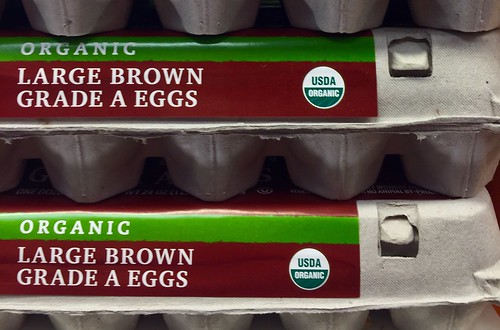
USDA’s National Organic Program defines organic production as a system that is managed to respond to site specific conditions by integrating cultural, biological, and mechanical practices that foster the cycling of resources, promote ecological balance, and conserve biodiversity.
While USDA reports that organic agriculture typically produces lower yields compared to conventional agriculture, there’s no denying that organic farming delivers several environmental benefits, like improving soil quality, and remains a growing and profitable sector of the farming industry.
Reflecting this, the new data from the USDA’s National Agricultural Statistics Service (NASS) 2016 Certified Organic Survey was eagerly awaited; NASS currently produces the most comprehensive certified organic production data for the nation and each of the 50 states. Data highlights include:
- U.S. farms and ranches sold $7.6 billion in certified organic commodities in 2016, up 23 percent from 2015.
- Of the sales, 56 percent was crops and 44 percent was livestock, poultry, and related products (e.g. milk).
- Between 2015 and 2016, the number of certified organic farms increased 11 percent to 14,217, and the number of certified acres increased 15 percent to 5 million.
- California led in number of certified organic farms, number of acres, and sales.
- Milk and eggs were the top two certified commodities sold.
For more highlights from the 2016 Certified Organic Survey, visit www.nass.usda.gov/Publications/Highlights/2017/2016_Certified_Organic_Survey_Highlights.pdf (PDF, 1.4 MB).
The 2016 Certified Organic Survey is a census of all known U.S. farms and ranches with certified organic production in 2016. NASS conducted the survey in conjunction with USDA’s Risk Management Agency to develop crop insurance products for organic growers. To be included, producers must be certified by an approved agent of USDA’s Agricultural Marketing Service’s National Organic Program. All products with the USDA organic label must comply with NOP regulations.
The 2016 data, as well as results of previous NASS organic surveys, are available in the NASS searchable database Quick Stats at www.quickstats.nass.usda.gov or as a PDF publication at www.nass.usda.gov/organics.
Many USDA agencies serve the organic sector. Whether you're already certified organic, considering transitioning all or part of your operation, or working with organic producers, USDA has technical and financial resources for you. For more information, visit www.usda.gov/topics/organic.


